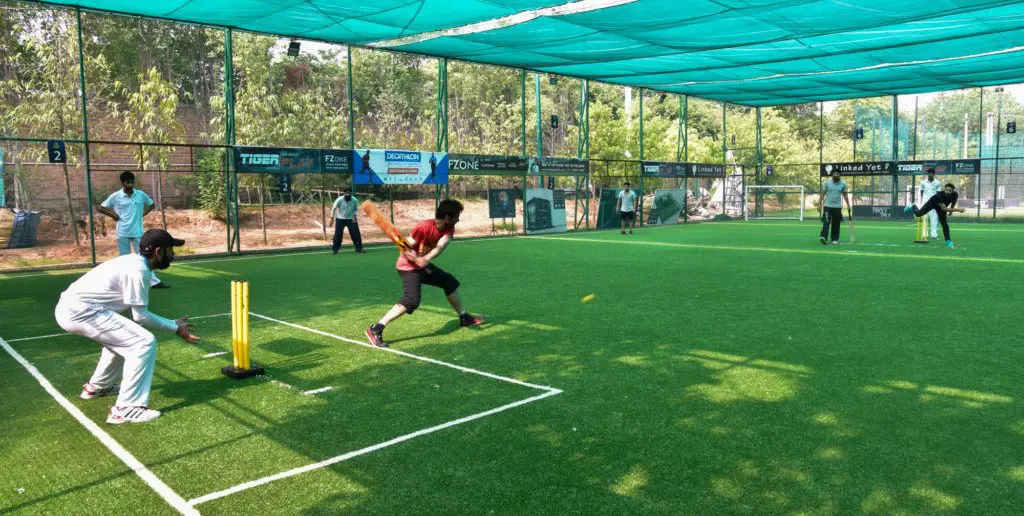What Are Box Cricket Rules?
Box cricket, a beloved variant of the conventional sport, stands out for its dynamic, fast-paced nature and unique set of rules. Unlike traditional cricket, this compact version is played within confined spaces, often indoors, offering an adrenaline rush and fostering swift, strategic gameplay.
Box Cricket Rules Explained
- Field Dimension: The pitch in box cricket is considerably smaller, limiting the scope for traditional long shots but intensifying the competition.
- Team Size: Typically, each team comprises 6-8 players, ensuring a quick turnover of overs and maintaining the game’s fast tempo.
- Overs and Runs: Matches usually consist of 4-8 overs per inning, and batsmen aim to score quick runs without losing wickets.
- No LBW: A notable deviation from standard cricket rules is the absence of LBW (Leg Before Wicket) decisions, amplifying the focus on aggressive batting.
Strategies that Dominate Box Cricket
Given the condensed format, strategies in box cricket diverge significantly from those in traditional cricket:
- Aggressive Batting: Batsmen emphasize power hitting over defensive strokes to maximize runs in the limited overs.
- Quick Rotations: Running between wickets assumes paramount importance, demanding swift yet safe transitions.
- Bowling Tactics: Bowlers focus on variations and accuracy, striving to limit the opposition’s scoring opportunities.
Statistics and Trends
- Popularity Surge: Box cricket has witnessed a remarkable surge in popularity, especially in urban settings where space constraints encourage indoor sports.
- Youth Attraction: Its fast-paced nature has resonated with the younger demographic, fostering local tournaments and leagues.
- Global Expansion: Beyond its Indian origins, box cricket has piqued interest globally, with enthusiasts organizing tournaments worldwide.
Facts and Figures
- According to recent surveys, 7 out of 10 cricket enthusiasts have either played or expressed interest in playing box cricket.
- The annual revenue generated by box cricket leagues has seen a steady increase of 15% year-on-year, highlighting its commercial viability.
Mastering Box Cricket: Tips for Beginners
- Footwork Matters: Focus on foot movement to strike the ball cleanly and navigate the pitch swiftly.
- Practice Power Hitting: Develop the skill of power hitting without compromising on timing and precision.
- Bowling Variations: Experiment with different bowling techniques in Box Cricket to catch opponents off-guard.
Why Box Cricket Transcends Boundaries
Box cricket’s universal appeal stems from its adaptability, fostering inclusivity and passion for the sport:
- Accessibility: Its indoor format makes it accessible to players regardless of weather conditions or location.
- Community Engagement: Local tournaments often foster a sense of camaraderie, uniting diverse communities through sport.
Frequently Asked Questions About Box Cricket
What equipment is required to play box cricket?
Box cricket primarily requires a tennis ball, bats, stumps, and a confined space, making it an easily accessible sport.
Is box cricket only popular in India?
While its roots lie in India, box cricket has gained traction globally, with various countries adopting and embracing the sport.
How is box cricket different from regular cricket?
Box cricket differs in field size, team composition, overs per inning, and absence of LBW decisions, fostering a more aggressive style of play.
Unleashing the Box Cricket Fever!
Box cricket’s magnetic appeal lies in its fusion of strategy, agility, and fast-paced action. As this variant continues to captivate enthusiasts globally, its evolution and innovation promise an exciting future for this dynamic sport. Whether you’re a seasoned player or a newcomer, the thrill of box cricket awaits, promising an exhilarating ride into the world of swift strikes and strategic gameplay.
I am Dhaval Jain, SEO All-Rounder at CricHeroes.
CricHeroes is an ultimate Cricket Scoring App and the world’s only true Cricket Network. With more than 30 million registered cricketers using CricHeroes to Live Score their Local Cricket Matches and Tournaments, CricHeroes is already the number one Cricket Scoring App in the world!










